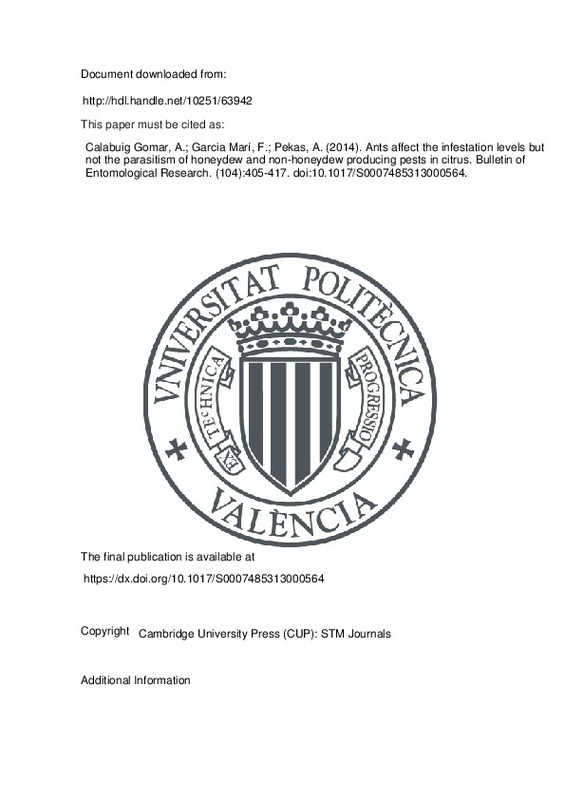JavaScript is disabled for your browser. Some features of this site may not work without it.
Buscar en RiuNet
Listar
Mi cuenta
Estadísticas
Ayuda RiuNet
Admin. UPV
Ants affect the infestation levels but not the parasitism of honeydew and non-honeydew producing pests in citrus
Mostrar el registro completo del ítem
Calabuig Gomar, A.; García Mari, F.; Pekas, A. (2014). Ants affect the infestation levels but not the parasitism of honeydew and non-honeydew producing pests in citrus. Bulletin of Entomological Research. (104):405-417. https://doi.org/10.1017/S0007485313000564
Por favor, use este identificador para citar o enlazar este ítem: http://hdl.handle.net/10251/63942
Ficheros en el ítem
Metadatos del ítem
| Título: | Ants affect the infestation levels but not the parasitism of honeydew and non-honeydew producing pests in citrus | |
| Autor: | Calabuig Gomar, Altea Pekas, Apostolos | |
| Entidad UPV: |
|
|
| Fecha difusión: |
|
|
| Resumen: |
[EN] Ants act simultaneously as predators and as hemipteran mutualists, and thereby
may affect the composition and population dynamics of a wide arthropod
community. We conducted ant-exclusion experiments in order to ...[+]
|
|
| Palabras clave: |
|
|
| Derechos de uso: | Reserva de todos los derechos | |
| Fuente: |
|
|
| DOI: |
|
|
| Editorial: |
|
|
| Versión del editor: | https://dx.doi.org/10.1017/S0007485313000564 | |
| Código del Proyecto: |
|
|
| Agradecimientos: |
This work was supported by the project (RTA2010-00012-C02-02) assigned to F. G. M from the Instituto Nacional de Investigacion y Tecnologia Agraria y Alimentaria (INIA) of Spain. We thank three reviewers for their comments ...[+]
|
|
| Tipo: |
|







![[Cerrado]](/themes/UPV/images/candado.png)


